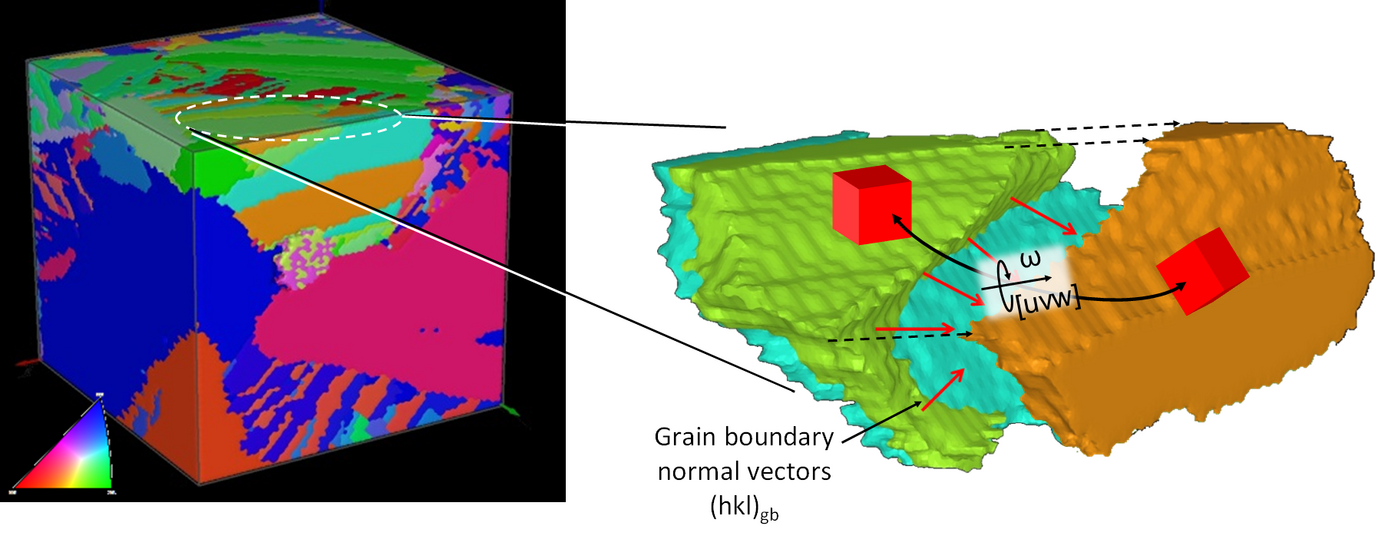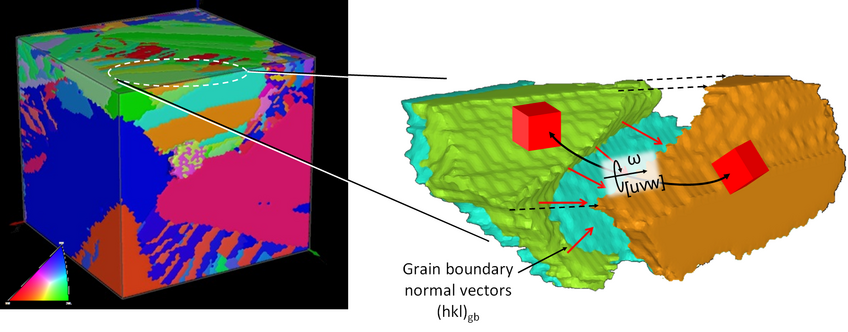Grain boundary characterization - GBC
Grain and phase boundaries are planar lattice defects where two crystal lattices of different orientation and/or different crystallographic structure meet. Grain boundaries strongly influence structural and functional properties of materials. Characterization can be done by various techniques for crystallograpic measurements.

Most crystalline materials do not consist of one single crystal but of many individual crystallites which are bond together at grain boundaries. At these grain boundaries the atomic structure of the two joining crystal lattices is strongly disturbed which is why grain boundaries usually have high energy and strong influence on mechanical and functional properties of the material. Grain boundaries are, for example, at the origin of the Hall-Petch relation describing the strength of metals (the more grain boundaries the stronger is a metal) but they also determine the ductility and crack resistance of metals and other materials. They strongly influence electronic properties which is why materials with nano-crystalline structure, where grain boundaries govern the materials behavior, often show very different optical or electronic properties than large-grained materials.
Grain boundaries are characterized by 5 rotational and 3 translational parameters. All these parameters influence the properties of boundaries. The 3 translational parameters describe atomic shifts that may occur at grain boundaries. The rotational parameters are the 3 parameters describing the misorientation between the crystals and 2 parameters describing the grain boundary normal. The misorientation itself is a rotation consisting of a rotation axis (2 parameters) and a rotation angle (1 parameter). Usually, when the rotation angle is small (~<15°) the grain boundary is composed of individual dislocations and the boundary is called is small angle grain boundary. When the angle is larger, the boundary structure is less well defined and it called a large angle grain boundary. Besides this exist also special boundaries, for example twin boundaries, which have a large misorientation but nevertheless show high atomic order.
Grain boundaries and their characteristic rotational parameters can be observed, for example, by 2D and 3D ->EBSD or by TEM. The atomic parameters can be observed only by atomic resolution TEM.
